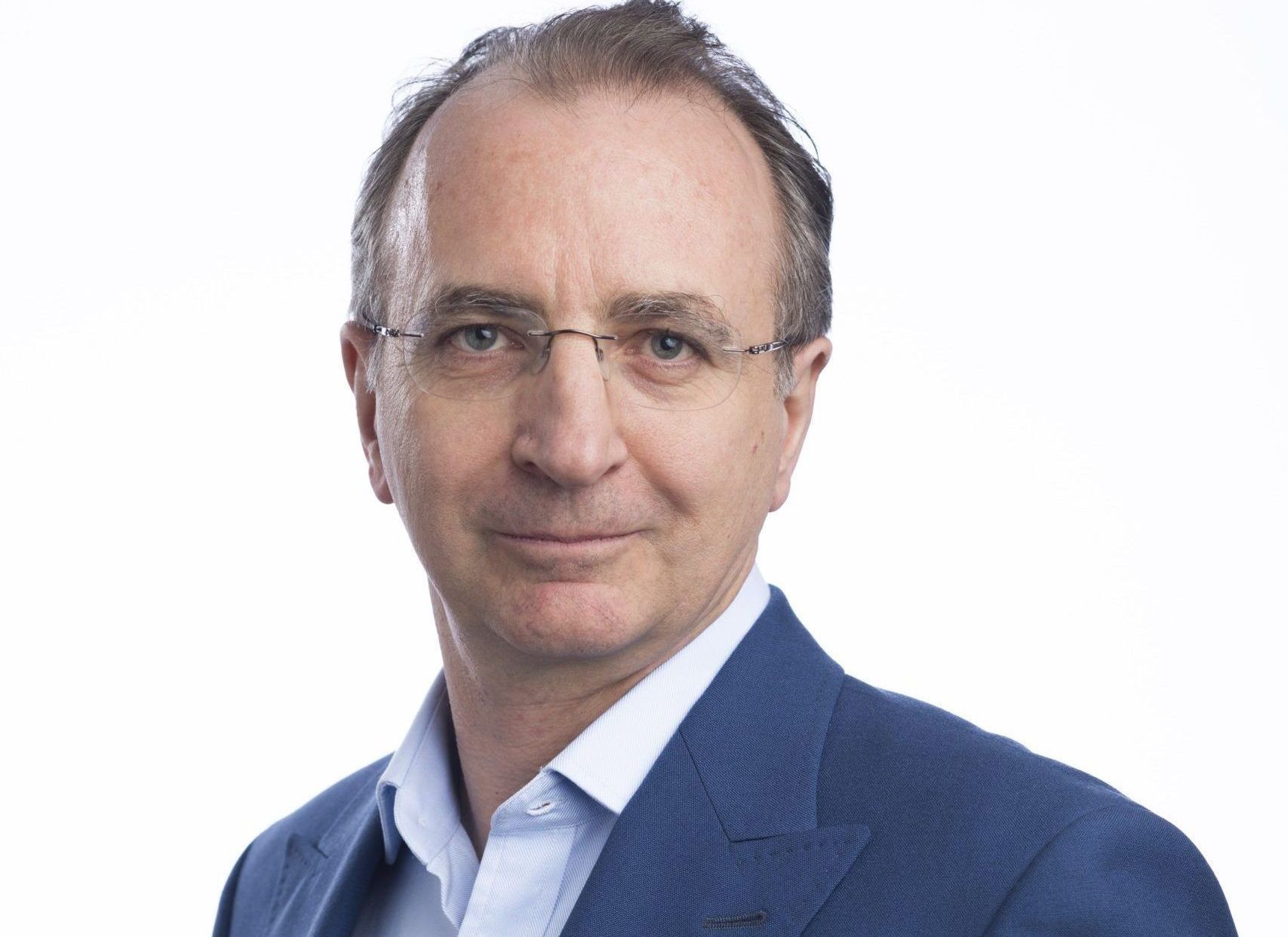#INEED 2025 - Steve Fawkes: "You Ain’t Seen Nothing Yet"
Steve Fawkes on the Energy Transition, Renewables and the Future of Power | #INEED 2025

I’m Steve Fawkes, non-executive Chair of ZPN Energy.
I want to offer some historical perspective on the energy transition, the changes we are experiencing and also provide grounds for optimism at a time when it can be difficult to remain optimistic. I have been around long enough to draw on my own lifetime experience to give that perspective.
I first began studying what we now refer to as the ‘energy transition’ in 1977. It was a very different world at the time. We had recently experienced the Arab Israeli War of 1973, which led to a fourfold increase in the price of oil and that event was what truly brought ‘energy’ into focus as a subject. It catalysed the changes we now describe as the energy transition that we are currently living through. In 1979, the second oil crisis was triggered by the Iranian revolution and my Iranian friends are hopeful that, given current events, we may soon witness a second Iranian revolution and they will be able to return to Tehran in the near future.
From a UK perspective and using 1980 as a benchmark, more than 70% of electricity was generated by coal and the energy industry’s view was that the future would be what they called CoNucCo: coal, nuclear and conservation or what we now refer to as efficiency. North Sea gas had only started flowing in 1968 and the last homes were converted from town gas to natural gas as recently as 1976.
Much of industry still used coal or oil boilers. What I call the energy establishment, the CEGB, the Department of Energy as it was then, British Gas and the National Coal Board were all monolithic public entities and they decided, or at least they thought they decided, what the energy future was going to be. At that time the official forecasts had energy use growing in line with the economy and a relentless expansion of large centralised energy.
At the same time some crazy pioneers proposed that the future could follow a different path and there was considerable discussion about forms of ‘alternative energy’ such as wind and solar.
In the late 1970s in the US, Amory Lovins wrote a very famous paper called
Soft Energy Paths which promoted renewables and efficiency and said that US energy use might not grow at all in the time period up to 2025. Here in the UK, Gerald Leach and his team wrote
A Low Energy Future for the UK which basically said the same for the UK. Leach’s
Low Energy Strategy for the UK said that by 2025 the UK economy could grow by 300% which, by the way, it did, but energy use could go down. Bear in mind the official forecast said energy use would nearly double and fairly soon after there was a plan to build 83 GW of new nuclear power stations which is more than the current capacity of the grid.
Leach’s study was widely rubbished and the most polite thing that the energy establishment experts said about it was that it was ‘optimistic’. Amory Lovins was also pilloried by the US energy establishment.
Well let me tell you what happened to those crazy impossible scenarios. In the UK the economy grew by almost exactly the amount forecast but energy use did not increase and it fell by 12 percent. In the US total energy use in 2023 was less than Amory Lovins estimated in his Soft Energy Paths.
So it may surprise you but we are actually living in what was regarded as a totally “unthinkable”, “optimistic”, “crazy”, “it will never happen”, low energy future.
1980 was a landmark year for the solar industry, as US company ARCO was the largest producer of solar panels and made 1 MW in a single year (yes 1 MW in a single year). I checked and there are approximately 50 MW of solar plants within a 15 mile radius of the ZPN factory here in Coventry so 1 MW is absolutely nothing by today’s standards. Today the largest manufacturer of solar PV, Tongwei Solar, has a capacity of 150 GW of cells and 90 GW of modules, which is 100,000 times larger than the biggest manufacturer in 1980.
Even by 1990/91, when I helped catalyse some of the earliest wind farms in the UK, the wind industry was tiny because you couldn’t really call it an industry but more a collection of enthusiasts. We held meetings of the whole industry in very small rooms and the largest wind turbine was 400 kW while most were 250 kW. Today the UK wind industry has 450 companies and employs 45,000 people and the largest offshore turbines are 15 MW with 25 MW turbines now emerging which are 60 times larger than those early machines. If you had shown us those numbers in 1990/91 even the most visionary of us would not have believed them and the energy establishment would have laughed and told you they were totally impossible and would never happen.
What does this historical perspective tell you and what can it teach us about our views of the future today? It tells me that official forecasts and naysayers are usually wrong.
Today we hear a lot of people say ‘net zero is impossible’, we hear a lot of people say ‘EVs don’t work or sales have faltered’ and we hear a lot of people, including the government, say that the future is building more nuclear reactors including that mythical beast the Small Modular Reactor. We also still hear some people say ‘the sun doesn’t shine all the time’ like nobody knew that before.
We also often hear people say ‘despite all the investment in renewables they only represent a small percentage of energy use’. This is known as the primary energy myth because we compare generation by renewables with primary fossil fuel energy and completely ignore that in thermal power stations we discard two thirds of the fuel energy as waste heat and in internal combustion engine cars we waste eighty per cent of the fuel energy as heat. Once we electrify systems such as heating and vehicles you eliminate all that waste and all that gas oil and coal being burnt for nothing while emitting carbon dioxide and many other harmful air pollutants that affect health.
Yes, of course there are problems and challenges. There weren't enough electric car chargers, there were grid connection problems etc, but remember this is a transition. There are bound to be problems as we change out our entire infrastructure and change our electricity markets. Also, energy transitions do take a long time, this one will be quicker than any previous energy transition but 40 years into it, i think we are about half way through.
People forget about the power of incumbents in trying to stop or delay change. Nearly every day we see stories in the press criticising net zero or EVs. Remember incumbents always do everything they can do, legal and sometimes illegal to stop the disruptive innovators and most of those negative stories are made up by the fossil fuel incumbents.
Of course incumbents resisting change is nothing new. In the mid nineteenth century the stagecoach and particularly locomotive industries found themselves facing the looming spectre of the automobile’s disruptive potential. They were afraid the car would replace them. So they worked hard to convince the government to introduce strict laws such as the 1865 Red Flag Act. This restricted the speed of horseless vehicles to 2 mph in towns and 4 mph in the countryside.
The Act also required three drivers for each vehicle : two to travel in the vehicle and one to walk ahead carrying a red flag. There were similar laws passed in the US as well. Here in the UK the Red Flag Act was finally repealed on 14 November 1896 when the Locomotives on Highways Act scrapped the flag requirement and raised the speed limit to 14 mph. The London to Brighton run of veteran cars is held every year to commemorate the repeal of the law and is always held in November.
Now we are seeing a lot of lobbying from fossil fuel incumbents. In the US several states have passed or are trying to pass anti renewable energy laws while Trump rants about ‘windmills’. Mean while one of those states Texas has installed more renewables than any other state and it does not look as though that is going to stop anytime soon so we are seeing the old energy money and their paid for politicians fighting the new energy money and their paid for politicians.
Incumbents can delay change but they never stop it in the end. The drivers of change are too strong and there are three drivers of the energy transition:
- Sustainability which is not really sustainable because people will not pay more for green.
- Economics now we are in a phase where solar is the cheapest form of electricity.
- Energy security at a macro level if we do not use fossil fuels we cannot be blackmailed by oil and gas producing states and at a micro level if you have solar and batteries you are less dependent on the grid and can overcome grid constraints.
At different times some have been more powerful than others and some like economics have been negative but right now for the first time all three forces are pulling in the same direction and on top of that the finance industry is being proactive and shifting capital towards the energy transition and decarbonisation. The drivers, particularly the economics are unstoppable. Even when economics are not so good addressing grid constraints to ensure a consistent stable power supply is an existential problem for many companies and property developers unless they solve the problem they do not have a business.
When thinking about the future people also forget about the power of S curves. S curves are incredible because things seem to change really slowly and then suddenly they take off. The diffusion of all technologies follows “S curves” and now we are finally seeing that with solar and batteries are not far behind. “S curves” have five phases:
- Solution search
- Proof of concept
- Early adopters
- System integration
- Market expansion
We are just moving out of early adopters into system integration which means you have not seen anything yet and rapid growth especially of solar and batteries is only really getting going. In the words of the classic 1974 Bachman Turner Overdrive song ‘You ain’t seen nothing yet’. The trends are clear.
We are seeing record installations of solar and batteries and increasing sales of EVs not just in China but globally and in the UK. In 2024 the world installed nearly 600 GW of solar which is 600,000 times the output of the biggest PV factory in 1980 and equivalent to the peak output of 600 nuclear power stations. For comparison the global nuclear industry added 7 GW in 2024 which is about 1 percent of that capacity. In 2023 battery energy storage systems tripled and are expected to grow at 21 percent a year up to 2030.
In 2024 EV sales globally grew by 25 percent. At the end of 2024 the electric car fleet had reached almost 58 million which is about 4 percent of the total passenger car fleet and more than triple the electric car fleet in 2021. Notably the global stock of electric cars saved over 1 million barrels per day of oil consumption in 2024. In countries with a high percentage of EVs such as Norway and China we are already seeing oil consumption drop.
The transition is accelerating as solar and battery prices continue to fall. In the next stage of the transition the focus will be on electrification and distributed energy and small scale close to the point of use energy systems.
The famous science fiction writer Arthur C Clarke once said that ideas go through three phases:
- it will never work
- it might work
- I told you it would work all along
With solar we are now moving into phase three with only a few holdouts still saying things like ‘the sun does not always shine’.
The future will be electric with abundant cheap solar and batteries everywhere in a distributed and flexible system with more power in the hands of the consumer or rather prosumer as they will be both producers and consumers than ever before.
So what will some of the consequences of these changes be? Well, they certainly include cleaner air, reduced emissions of carbon dioxide and other greenhouse gases, reduced oil and gas consumption and ultimately lower energy costs for consumers. But there will also be political changes globally and locally. Energy particularly electricity is associated with big centralised power as there are always close links between energy and power and political power. In every country, even the USA, the grid was built by the central government mainly between the 1930s and 1970s.
Back in the 1980s we talked a lot about ‘petrostates’ those countries whose economies depended heavily on the production of oil such as Saudi Arabia and others in the Middle East. Now we are seeing the emergence of the first ‘electrostate’ China. With a shift in power and energy flows there is always a shift of political power. The shift towards all consumers buildings and industry and even cars becoming both producers as well as consumers of power and ancillary grid services will shake up international national and local politics in ways that have not really been thought about yet. Abundant clean and cheap power will allow us to do new things to create new industries, repair and regenerate the environmental damage we have done over the industrial age and produce more high quality lower cost food.
I am planning on sticking around to see the rest of this transition as it is just getting really interesting.
If you want to read more of my thoughts on the energy transition and a few other subjects close to my heart subscribe to my blog https://www.onlyelevenpercent.com/








